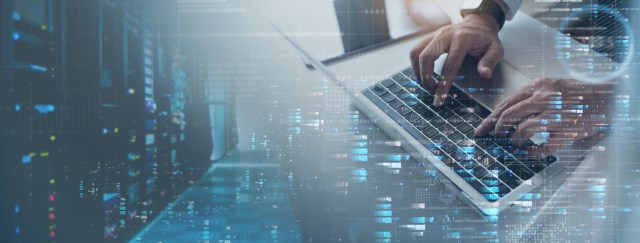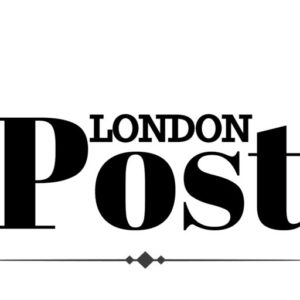
London is increasing investment in AI-powered surveillance.
This approach is part of efforts to make London one of the areas with the highest concentration of surveillance cameras in the world. The idea is to reduce crime and keep streets safe.
AI can optimize the value of surveillance cameras by identifying individuals in a crime database and tracking them to their homes for arrest. This technology can also support city management by monitoring traffic, detecting incidents, enhancing safety, and providing real-time data for faster decision-making.
However, this new technology also raises human rights concerns, as it promotes massive databases of personal ID information that are vulnerable to abuse if they are breached. Plus, being constantly watched makes some Londoners uncomfortable.
This article explains the rise of AI surveillance in London, public safety and crime prevention, balancing privacy and innovation, and IT management.
The Rise of AI Surveillance in London
London is known globally as the location of one of the highest concentrations of surveillance cameras. This situation came as a result of high crime rates in London in the past decades, and a way of using technology to combat this as a deterrent to criminals and to make residents and tourists feel safer.
This technology now incorporates AI, which includes features like facial recognition, behavior prediction, and real-time alerts to the London police force to send resources out to investigate.
Recent AI surveillance initiatives in London include Transport for London’s trial at Willesden Green Tube station, where AI analyzed live CCTV footage to detect safety incidents and fare evasion, generating over 44,000 alerts during the trial period.
Hammersmith and Fulham Council has also implemented AI-enabled cameras to monitor and respond to criminal activities, enhancing public safety measures in the borough.
Public Safety and Crime Prevention
The reason for the use of AI surveillance is to increase public safety by increasing successful crime prevention efforts.
AI uses facial recognition to be the eyes on the ground and see repeat offenders and then send real-time alerts to the local police force to send out officers if necessary. When cameras are activated to use AI to record footage of specific offenders, police can then use this footage in court for prosecutions.
But that’s not the only purpose of real-time functions of AI surveillance technology. It can also use real-time data analysis to keep any eye on crowd behavior to ensure safety and identify suspicious activity from individuals that may seek to kill or injure people in large crowds.
It is also useful for traffic safety. In 2020, during the COVID-19 pandemic, the Greater London Authority deployed AI-powered surveillance using over 900 live traffic cameras to monitor social distancing compliance in public spaces. This system provided real-time data on crowd density, enabling city officials to make informed decisions on public safety measures and resource allocation.
Balancing Privacy and Innovation
Just as with any form of surveillance, AI surveillance in London was met with opposition for several reasons. Civil liberty groups voiced opposition, to which safeguards and regulations were set in motion in response, and now city leaders are addressing ethical issues.
Civil liberty group concerns
Civil liberty groups argue that AI surveillance can lead to mass data collection, bias, and a loss of privacy. They call for greater transparency, oversight, and limits on facial recognition use. These groups include Big Brother Watch, Liberty, and the Open Rights Group.
Safeguards and regulations
UK data protection laws and public sector codes include the Surveillance Camera Code of Practice Issued by the Home Office, which sets out principles for the use of surveillance cameras, focusing on necessity, proportionality, and accountability.
There is also the Biometric and Surveillance Camera Commissioner Oversight. This regulation means an independent commissioner oversees public surveillance practices, ensuring systems are used responsibly and in line with human rights and data protection laws.
City leaders address AI surveillance ethical issues
City leaders emphasize responsible AI use, consulting with ethics panels and privacy experts. They support community engagement, publish impact assessments, and adopt frameworks promoting fairness, transparency, and accountability in surveillance practices.
IT Management Behind the Scenes
One of the challenges of ensuring thousands of AI-driven surveillance cameras operate correctly and safely is that they require strong IT infrastructure and oversight, also known as IT management.
Some of the most significant aspects of AI surveillance IT management are data security, network monitoring, and regular system updates. It’s important for London IT management to include the best patch management software available which updates AI software to fix security vulnerabilities, improve performance, and ensure systems stay secure and reliable.
These tools help IT teams automate updates so they don’t have to waste time updating them manually. They can also audit systems easily and maintain uptime because they don’t need to stop the system to maintain it, as it updates automatically.
Conclusion
There are many benefits to using AI in surveillance equipment for public safety. It can help identify criminals and be a deterrent against repeat offenses. It can also support crowd safety by identifying suspicious behaviour and help improve traffic safety by monitoring traffic and using predictive behaviour analysis to prevent dangerous driving.
However, it’s important to also consider the ethical sides of using AI surveillance. AI involves storage of large amounts of personal ID information for the public which could be used for malicious reasons if it gets into the wrong hands. IT management and patch management software work together to keep systems updated and data safe.
AI can be a useful tool in keeping the public of London safe as long as government agencies work to use it responsibly.







